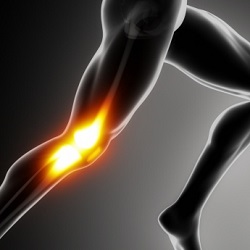New materials that reproduce our body tissues may heal joint injuries and other conditions
The human body is not made to last for the increasingly longer times we are now able to live an active life. As the global population increases at unprecedented rates, rapid advances in medical technology have allowed the number of elderly people to rise as well. By creating hard and strong sponges engineered at the molecular level, I am trying to repair the parts of the body that wear most.
One example is cartilage, the hard part of the nose and ears. Cartilage also sits between bones in your joints, such as the knee or elbow. Once it wears off, the body is incapable of repairing it unlike other tissues, leading to rubbing of bones in the joint and stiffening of the limbs, as well as chronic pain. In elderly people this is the result of a condition called osteoarthritis, but the same symptoms are often the results of sport injuries at a much younger age. A total joint replacement, the current standard for the treatment of broken cartilage, does not allow patients to run again for the duration of their life.
Tissue engineering has grown in the last twenty years to try and answer this challenge. The general approach makes use of biologically compatible materials that contain stem cells taken directly from the patient. As the material, called a cellular scaffold, is inserted back into the body it allows the repair of the target natural tissue as the body itself grows from within and through the scaffold. While this approach has proved successful in repairing tissues such as the skin of burn victims, or even the spinal cord of a paralysed man, intrinsic difficulties persist with engineering strong tissues like cartilage.
A cellular scaffold needs to be porous to accommodate cells, and is generally made of biodegradable plastics so that as the new tissue grows, the synthetic scaffold gradually disappears. The problem when making synthetic cartilage can then be thought of as making something like a kitchen sponge become as hard and strong as the kitchen counter, while not changing the material it is made of. Although this seems conceptually impossible at first, the ability to alter matter at the scale of single atoms has now given us the chance to create materials with characteristics never seen before. I make use of this to engineer porous biomaterials with the same mechanical properties as cartilage. These may be soon used as scaffolds to repair the damage brought by osteoarthritis and sport injuries, and improve the quality of life of millions of people worldwide currently suffering from these conditions.
Giovanni Offeddu
NanoDTC PhD Student Cohort 2012
Oyen Lab, Department of EngineeringCambridge Centre for Medical Materials, Department of Materials

